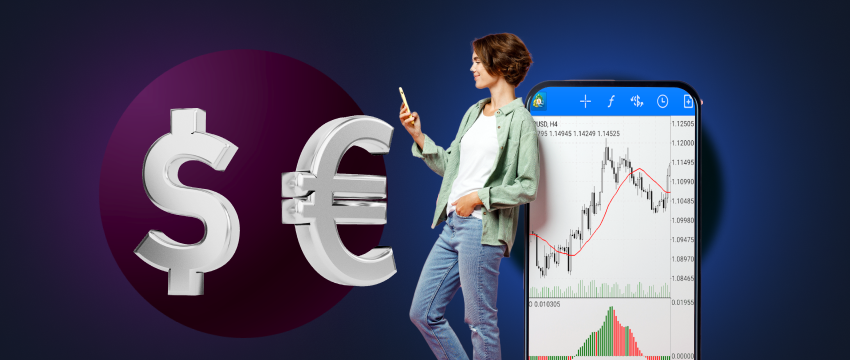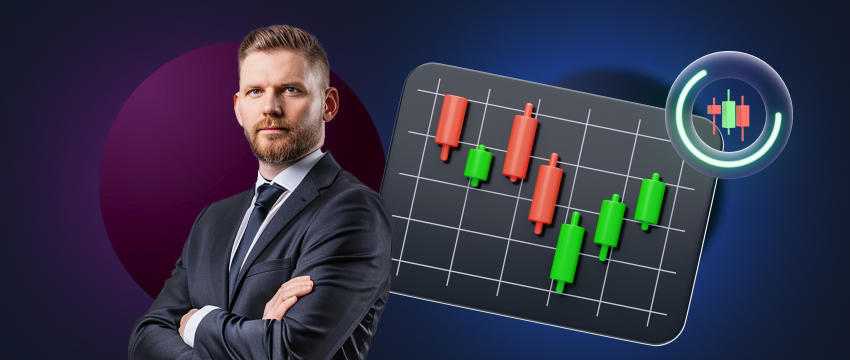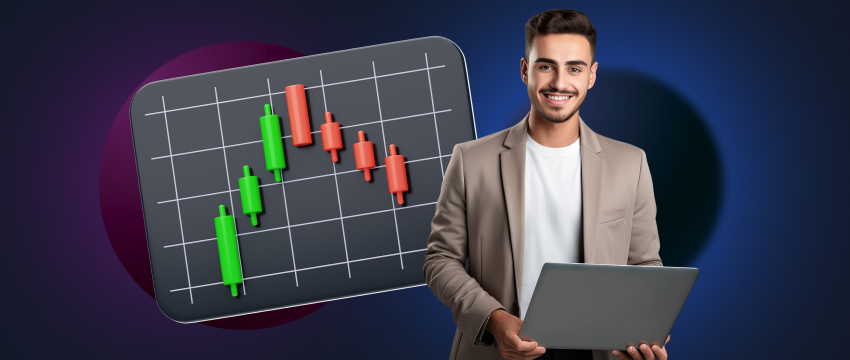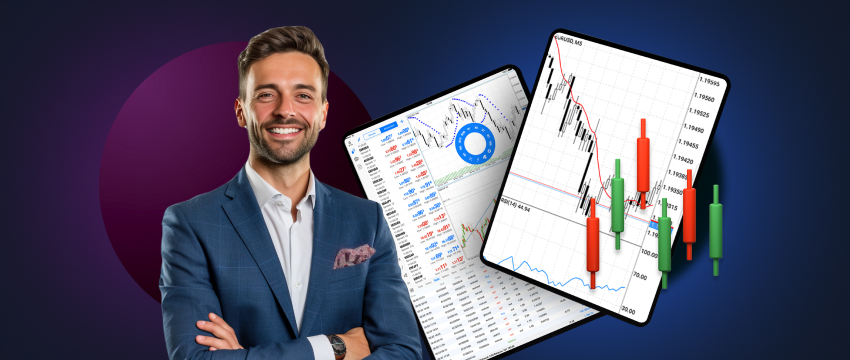The concept of the most profitable currency pair can vary depending on market conditions. Economic factors, geopolitical events, and trading strategies. This is not to say that some currency pairs aren’t more popular or have higher liquidity. There are and they do. And this can lead to more profitable outcomes because of tighter spreads and better execution.
In light of the aforesaid, let’s take a look at some of the most traded. And often times considered potentially more profitable currency pairs:
Profitable currency pair
- el EUR/USD: this is arguably the most traded currency pair globally. Traders widely recognize it for its low spreads, high levels of liquidity, and significant trade volume. These factors may boost its potential for profitability.
- el AUD/USD: this is another popular currency pair that appeals to traders. Largely due to its correlation to commodity fluctuations (especially gold).
- el USD/CAD: This currency pair, also known as the “Loonie,” is influenced by oil prices. Not surprising if one considers Canada’s considerable oil exports. Canada reportedly ranks as the 5th largest oil producer globally and holds the world’s 3rd largest proven oil reserves.
- el USD/JPY: one of the most liquid and heavily traded currency pairs worldwide. The pair also reflects the economic policies between Japan and the US. Traditionally, it has had a close and positive correlation with US Treasury yields.
- el GBP/USD: This currency pair is also known as the Cable. It is regarded as the 3rd most widely traded pair. And is said to have accounted for approximately 11% of the forex market as of 2023.

Key Factors Influencing the Profitability of Currency Pair
Forex trading profitability is impacted by several key factors. They are:
- Trading volume and time of day: Trading volumes and the overlap of trading sessions (open times) influence liquidity and the potential for profit.
- Political or economic stability: Whether this is an event like Brexit, cross-border trade agreements, or war, each one of these factors can cause significant volatility. In addition, thereby increased trading opportunities in the forex market, with increased potential for making a profit.
- Economic indicators: The economic health of a country plays a massive role in the value of a currency rising o dropping. Metrics like GDP, employment/unemployment rates, inflation, and interest rates largely influence economic health. These indicators also go on to impact central bank policies. Depending on the direction the policies take, the potential for making a profit may expand or decrease.
- Sentimiento de mercado: Traders’ perceptions and expectations also have the power to drive price fluctuations, alongside economic data.
Strategies for Currency Pair Profitability
There are many different ways to trade currency pairs. The choice of strategy is however largely dependent on the time one has to not only dedicate to trading. But also conducting the research and analysis required to make effective trading decisions. In addition, one’s budget also plays a role being. That each strategy comes with its own set of challenges and volatilities, leading to potential losses.
So, let’s look at some of the strategies that hold global appeal among traders everywhere:
- Day trading: this strategy involves executing frequent trades within a single day. This is done to try and capitalise or profit on small market movements.
- En las operaciones swing: this form of trading entails holding onto positions for several days at a time. Essentially, the trader tries to identify a possible trend and then holds onto the trade(s) for a particular length of time, usually two days to a number of weeks.
- El scalping: This is another popular trading strategy where traders hold onto trades for a few seconds to a few minutes at most. It involves incredibly fast-paced trading, with traders opening y closing trades in very short time periods multiple times throughout the day.
- La negociación de posiciones: A long-term strategy that relies on fundamental for making trading decisions. Here, traders hold trades for several months to several years. A position trader will attempt to profit from longer-term trends.
- Carry trading: this trading strategy tends to fall under the radar, but involves borrowing or selling a financial instrument with a low interest rate, and using it to buy a financial instrument with a high interest rate to profit from the interest rate differential.

Acquiring a trading-related education to become a better trader
Regardless of the currency pair you intend to trade, engaging in some form of learning to better your expertise is key. There are many different ways to acquire this type of education, if one considers the volume of resources available all across the internet.
Cuenta de demostración
To start, one of the best ways to learn currency trading is to practice executing trades. This is possible should you sign up for a demo cuenta de trading. This account will give you access to a simulated trading platform that has been designed to mimic real trading and market conditions. Using virtual funds, you can execute a variety of different trading strategies until you’ve ascertained which one works best for you.
You can open and close positions and assess outcomes, thereby putting you in a better position to know what to expect when moving to live trading. Signing up for a demo trading account with T4Trade for instance will give you access to the MetaTrader 4 platform, probably the world’s most popular trading system.
Once you’ve registered, you can also begin learning how to conduct technical and fundamental analysis, and how to use the range of cutting-edge trading tools the platform provides. At the point that you feel you’ve acquired the skills, knowledge and confidence to handle the challenges the forex market will throw your way, you can then move to live trading.
Recursos educativos
In addition to a demo trading account, there are many other ways to learn the fundamentals of currency trading. For example, T4Trade’s Academy offers a variety of resources to help you learn forex trading in more depth. This includes webinars, podcasts, videos on demand and e-guides.
In addition to the Academy, the T4Trade blog also provides a wealth of information about trading a range of financial instruments across multiple asset classes. T4Trade’s Live TV channel is another great source of information about trading. Running Monday to Friday, you can listen to commentary from the experts.
Other tools
T4Trade also offers traders use of their innovative Calendario Económico. This powerful tool provides real time economic coverage so that traders can track and react to potential market moving events.
El Calendario Económico is a must have tool for any trader thinking about trading de divisas. It allows for mapping forex charts and indices to events. With it, you can also monitor historical trends and their impact on currencies. Additionally, access real-time, updated macro-economic data for more accurate trading decisions.

T4Trade Trader: Currency Pair Trading
T4Trade is a popular global CFD broker for many reasons. For one, it offers its traders a top-tier trading experience comprised of a high-quality service and product offering. Traders at all levels can choose from 300+ financial instruments across 6 asset classes. This enables them to trade CFDs on a variety of currency pairs, from the majors to the minors and the exotics.
This is alongside Contract of Differences (CFDs) on metals, indices, commodities, futures, etc. In addition to competitive spreads and budget friendly trading fees, T4Trade also offers a variety of trading accounts for currency traders to choose from, catering to diverse needs and expertise.
Furthermore, traders can also use T4Trade’s advanced trading platforms featuring cutting-edge trading tools and functionalities, like thee T4Trade Web Trader app or the customisable MetaTrader 4 platform. Finally, T4Trade also offers flexible leverage, low spreads, quick execution of trades, easy deposit and withdrawal of funds, and a high-quality multilingual customer support service that’s on hand to assist you 24/5.
Descargo de responsabilidad: Esta información no se considera un consejo de inversión ni una recomendación de inversión, sino una comunicación de marketing.




